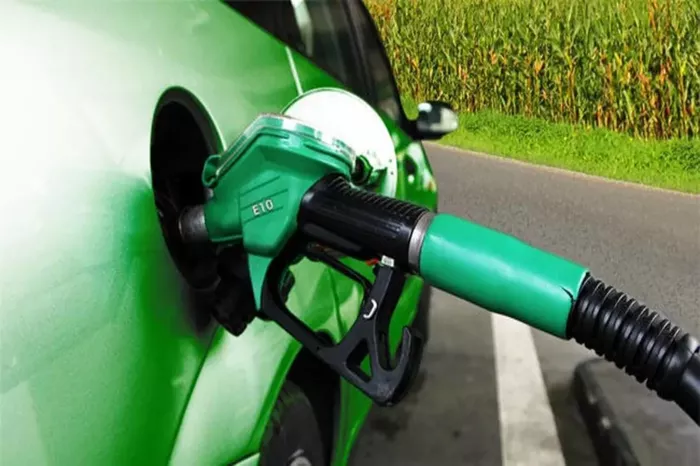Ethanol E10 fuel is a blend of conventional gasoline and ethanol. Specifically, it contains 90% gasoline and 10% ethanol. Ethanol is a renewable fuel made from various plant materials, collectively known as “biomass.” It is commonly used as a biofuel additive for gasoline to increase octane and improve vehicle emissions.
Composition and Production
Ethanol production involves fermenting the sugars in plants such as corn, sugarcane, or grains. In the United States, most ethanol is made from corn. In Brazil, sugarcane is the primary source. The fermentation process converts the sugars into ethanol and carbon dioxide.
Fermentation Process:
Preparation: Plant materials are ground up to release their sugars.
Fermentation: Yeast is added to convert sugars into ethanol and CO2.
Distillation: The mixture is heated to separate ethanol from water and other components.
Dehydration: Remaining water is removed to produce pure ethanol.
Blending: Ethanol is then mixed with gasoline to produce E10 fuel. This mixture has a higher oxygen content than pure gasoline, which helps engines burn fuel more completely and reduce emissions.
Benefits of Ethanol E10 Fuel
Ethanol E10 fuel offers several environmental and economic benefits:
Environmental Benefits:
Reduced Emissions: Ethanol burns cleaner than gasoline, reducing greenhouse gas emissions and other pollutants such as carbon monoxide and hydrocarbons.
Renewable Resource: Unlike fossil fuels, ethanol is produced from renewable resources, making it a more sustainable option.
Economic Benefits:
Agricultural Support: Ethanol production supports the agriculture industry by providing a market for crops like corn and sugarcane.
Energy Independence: By using domestically produced ethanol, countries can reduce their reliance on imported oil, enhancing energy security.
Performance and Compatibility
Ethanol E10 fuel is designed to be compatible with most modern gasoline engines without modifications. However, there are some considerations to keep in mind:
Engine Performance:
Octane Rating: Ethanol increases the octane rating of gasoline, which can improve engine performance and prevent knocking.
Fuel Efficiency: Ethanol contains less energy per gallon than gasoline, which can result in slightly lower fuel economy.
Compatibility:
Vehicles: Most vehicles manufactured after 2001 are designed to run on E10 fuel. Older vehicles, motorcycles, and certain equipment may require special consideration.
Materials: Ethanol can be corrosive to certain materials, such as rubber and plastics. Modern vehicles are built with ethanol-compatible components to mitigate this issue.
See also: What Is Ethanol Blended Fuel?
Usage and Availability
Ethanol E10 fuel is widely available at gas stations across many countries. Its usage is often mandated by government regulations to promote cleaner fuel and support renewable energy initiatives.
Availability:
United States: E10 is commonly available and is often the standard fuel at many gas stations.
Brazil: Brazil has a long history of ethanol use, with E10 and even higher ethanol blends widely available.
Europe: Many European countries have adopted E10 as part of their efforts to reduce emissions and meet renewable energy targets.
Regulations:
Renewable Fuel Standard (RFS): In the U.S., the RFS program requires a certain volume of renewable fuel to be blended into transportation fuel.
European Union: The EU has set targets for renewable energy use in transportation, promoting the use of ethanol blends.
Environmental Impact
Ethanol E10 fuel has a significant impact on the environment, both positive and negative:
Positive Impact:
Lower Emissions: Using E10 fuel reduces greenhouse gas emissions compared to pure gasoline.
Carbon Neutrality: Ethanol production and combustion are considered more carbon-neutral because the CO2 released during combustion is offset by the CO2 absorbed by plants during their growth.
Negative Impact:
Land Use: Large-scale ethanol production requires significant agricultural land, which can impact food production and biodiversity.
Water Use: Ethanol production is water-intensive, which can strain local water resources, especially in drought-prone areas.
Economic Considerations
Ethanol E10 fuel has economic implications for various stakeholders:
Consumers:
Fuel Costs: Ethanol-blended fuels can be cheaper than pure gasoline due to subsidies and lower production costs.
Fuel Efficiency: Slightly lower fuel efficiency with E10 means consumers may need to refuel more frequently.
Producers:
Agriculture: Farmers benefit from increased demand for ethanol feedstocks like corn and sugarcane.
Industry: Ethanol production creates jobs in agriculture, manufacturing, and transportation sectors.
Future of Ethanol E10 Fuel
The future of Ethanol E10 fuel is influenced by technological advancements, policy changes, and market dynamics:
Technological Advancements:
Second-Generation Ethanol: Research is underway to produce ethanol from non-food biomass, such as agricultural residues and waste materials, to reduce the impact on food supplies and land use.
Engine Technologies: Advances in engine design may improve the efficiency and compatibility of ethanol-blended fuels.
Policy Changes:
Renewable Energy Mandates: Government policies that promote renewable energy use and reduce carbon emissions will continue to drive ethanol adoption.
Incentives: Tax credits and subsidies for ethanol production and use can influence market dynamics and consumer choices.
Market Dynamics:
Oil Prices: Fluctuations in oil prices can impact the competitiveness of ethanol-blended fuels.
Consumer Preferences: Growing awareness of environmental issues and sustainability may increase consumer demand for renewable fuels like E10.
Conclusion
Ethanol E10 fuel plays a crucial role in the transition to more sustainable and environmentally friendly transportation fuels. Its benefits include reduced emissions, support for the agriculture industry, and enhanced energy security. However, challenges related to land use, water consumption, and fuel efficiency must be addressed. As technology advances and policies evolve, ethanol E10 fuel is likely to remain an important component of the global energy landscape.
By understanding the composition, benefits, performance, and future prospects of Ethanol E10 fuel, consumers and policymakers can make informed decisions that balance environmental and economic considerations. Ethanol E10 fuel represents a step towards a more sustainable future, contributing to cleaner air and a reduction in greenhouse gas emissions.
Related topics:

